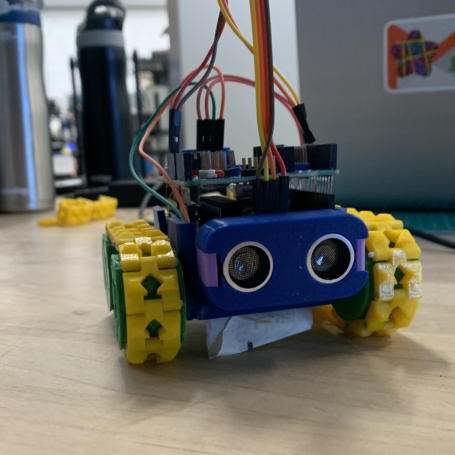Week Four: Oxytocin And Mirror Neurons
March 31, 2023
This week was filled with my continued research and increased responsibilities in the classroom. My week started off with a lecture. I was taught about designing websites for independent projects. Currently, all the other students are working on their final group projects and many of them have interesting, novel ideas. They will have to create prototypes and websites to document their progress. Later on, I will need to create a website to display their projects to the University community. In addition, I am looking forward to discussing with each group about their project and objective next week. On Wednesday, it was a fun and relaxing class, because we learned about art and meditation from a guest speaker. It was nice to have time to meditate during this hectic week filled with internships, research, and college decisions.
I did not get the opportunity to work on my neuroscience research with the graduate student this week, but I attended a robotic workshop. The workshop used many of the skills that I had learned through my cane project and robotics club. I was tasked with using arduino code to make a rover move in multiple directions based on an ultrasonic sensor. This activity allowed me to learn more about ways to detect and fix programming and hardware errors for the robot. In addition, I completed the challenge of making the rover go around an obstacle course.
For my independent cane project, I built upon the progress that I made last week. Last week’s experiment made it clear to me that the angle that the cane was pointed at was drastically too small because the cane had to be placed one cm away from the stairs for it to detect whether the stair was upward or downward facing. This concern could be very dangerous for blind users to safely determine the floor inclination; therefore, I spent this week trying to increase the angle to be more accurate at a larger distance. I plan to continue to work on how to successfully increase the distance. In addition, I learned python, so I can create a program to automatically create an Excel sheet to store the distance values coming from the cane. This program will help to save hours of my time because I have had to slowly copy and paste thousands of data points onto Google sheets, in the past.
For my independent research project, I have continued to learn about emotion, but I have primarily focused on attachment and love this week. My research showed the importance of mirror neurons and spindle cells in emotions. Mirror neurons are neurons in our body that control the limbic insula and anterior cingulate and cause us to replicate the emotional feeling of another person (Valliant, 2011). Mirror neurons seem to be the reason that we have sympathy for others. However, these mirror neurons are unable to control motor neurons that allow for our body to actually feel physical pain for someone else’s suffering (Vallaint, 2011). It was interesting for me to learn about the importance of mirror neurons as we grow because these cells are not present at birth and grow with our development of identity and feelings (Valliant, 2011). Valiant’s article also demonstrated that social bonding and attachment allows for evolutionary survival by having others who support our livelihood (Valliant, 2011). Additionally, I learned about oxytocin’s role in the nervous system as a way to achieve attachment by lowering cortisol level and blood pressure to increase calmness (Valliant, 2011). Based on this research, I have learned about conditions in which it may be harder to form attachment, such as autism. I will shift my focus next week by looking at disorders that impede emotions, such as autism spectrum disorder and anxiety disorder. Vaillant G. E. (2011). The neuroendocrine system and stress, emotions, thoughts and feelings. Mens sana monographs, 9(1), 113–128. https://doi.org/10.4103/0973-1229.77430

The image above is a picture of the robot that I had worked with during robotics night. All of the components on the robot, except for the electronics, are 3D printed. This photo is courtesy of Sudeep Goluguri. The robot was designed by MIX members at GMU.
